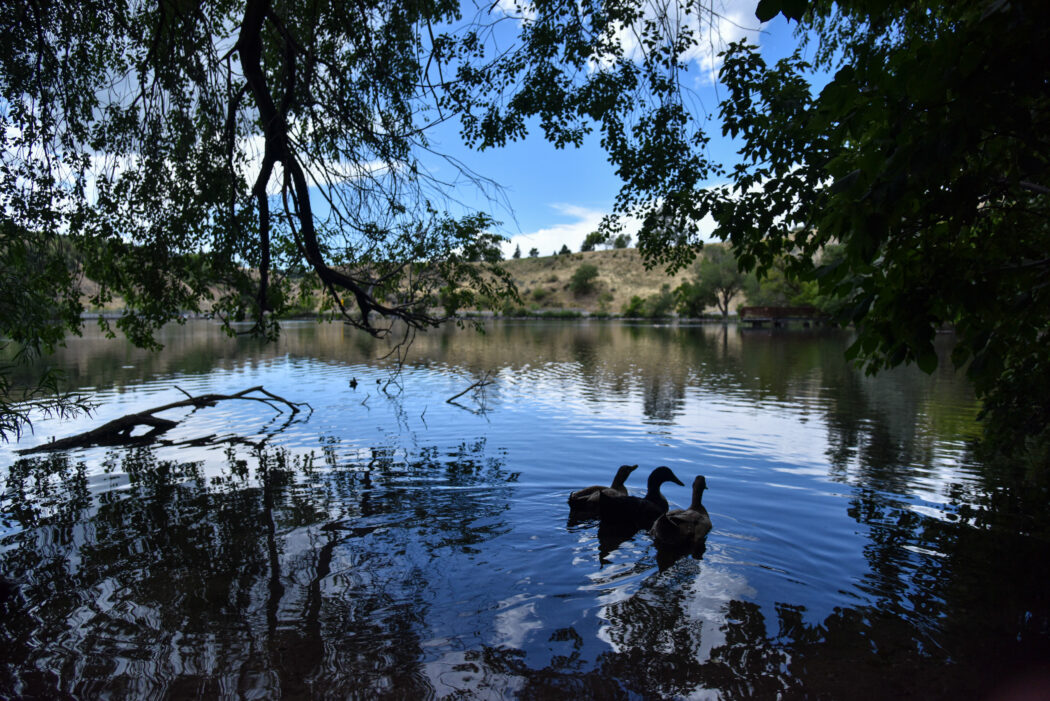Restoration Consortium workshops give students unique hands-on experience
The ever-changing state of the climate, due to global warming and climate change, has increased interest in restoration sciences. The same is true at USU. The Restoration Consortium, first established at the university in 2017, was created in order to address and promote the recovery of aquatic ecosystems, including streams, rivers and wetlands.
The restoration and protection of these aquatic ecosystems is extremely important to sustaining a healthy environment, not only for plants and animals, but for people and communities.
Dominique Shore was brought on as the Restoration Consortium director in 2022 in response to the growth of the program, its courses and the students interested in environmental restoration.
“Having cleaner access to water is vital for human economies and our livelihoods as well as all of the reasons that we love living in Utah,” Shore said. “We’re living in a time of pretty extreme drought, and some of these restoration techniques can help keep water on the landscape longer.”
According to Shore, the founding of the Center was driven by the large number of world-class restoration practitioners working under the Watershed Sciences department at USU.
“We saw a need to get the research that we do here at USU to practitioners and to train that next generation of practitioners,” Shore said.
One way the program facilitates training a new generation of practitioners is through restoration workshops offered throughout the year to USU graduate students and working professionals.
“The workshops that we’re doing this summer are all based in Logan, so students travel from, really, all over the country to come to Logan and learn from our instructors here these ecosystem restoration techniques,” Shore said.
Some of the workshops apart of this summer series include Sediment Transport for Restoration and Design and Basic Wetland Delineation, both of which are hands-on and take place in the field.
“We’ll take students out into the field to do pebble counts to see what the average gravel size is and how geomorphologists will look at a river and look at sediment transport problems,” Shore said.
One of the instructors for the Basic Wetland Delineation workshop is Nate Norman, the owner of Balance Environmental, an environmental consulting company. Norman has been an instructor for this workshop for four to five years, and has been involved with wetland restoration through his company for even longer.
In this workshop, Norman teaches students how the vegetation, soils and hydrology of an area contribute to locating a legal boundary between uplands and wetlands, a line that is often blurry.
It is critical to go through the process of delineation and find this boundary in order to protect the delicate ecosystems inside of wetlands and the services they provide to the environment.
According to the United States Environmental Protection Agency, these services include “protecting and improving water quality, providing fish and wildlife habitats, storing floodwaters and maintaining surface water flow during dry periods.”
“If anybody was doing a development or building a house, they would have to make sure that they avoided the wetlands,” Norman said.
The skills these students will be taught to conduct a wetland delineation will include digging up and testing soils and identifying and classifying surrounding vegetation, all of which take place in the field.
“We’re doing just the same kind of things that I do on a daily basis for work,” Norman said. “They’re getting a real life experience on what it is like to do a wetland delineation.”
These workshops offered through the Restoration Consortium are unique in their hands-on aspect and in their material, which prepare students and professionals alike for careers in restoration sciences.
The program includes other types of restoration, such as beaver mimicry, beaver translocation, wetland restoration and sediment transport, all taught by faculty with prior experience or education in those fields.
“It’s a great opportunity for USU students to become more engaged with what is really going on in the workforce when they leave school,” Shore said. “Giving these people the skills to improve their watersheds on a really broad scale is really powerful.”

